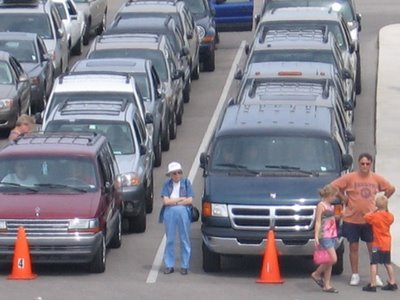 The American worker is spending considerable more time and money getting to work these days, according to two recents reports. And the combined costs are especially burdensome for working families in the Great Lakes region.
The American worker is spending considerable more time and money getting to work these days, according to two recents reports. And the combined costs are especially burdensome for working families in the Great Lakes region.The Commuting in America study, recently released by the Transportation Research Board, finds that more and more workers are leaving earlier to get the job - some as early as 5:30 AM - travelling farther distances from home to the workplace, and usually making the drive alone. The report, which is based on US Census data, also found that 1) the number of new solo commuters in the country grew by 13 million from 1990 to 2000 and 2) the number of workers with drive times longer than one hour grew by nearly 50 percent during the same decade.
The Heavy Load study, prepared by the Center for Housing Policy, sheds some light on the financial costs of those trends on working families. The report found that Great Lakes workers spend a cosiderable portion of their income on transportation-related costs. Minneapolis residents, for example, spend 27 percent of their income on transportation. Detroit residents 24 percent. Milwaukee residents 25 percent.
Drivers in San Francisco, Portland, and other major cities are saddled with similiar driving-related financial burdens. But commuters in those cities also have more transportation options. In Chicago, for instance, 79 percent of workers drive to work in private vehicles while 14 percent opt for public transit. In San Francisco, 77 percent drive while 12 percent take transit.
Those numbers are dramatically different in most Great Lakes cities due primarily to a lack of mobility choices and public policies that fail to integrate housing, transportation, and workplace development decisions. In Detroit, for example, 92 percent of commuters get to work by car while a ridiculously low 3 percent take transit. In Milwaukee, 88 percent drive and 6 percent choose transit. In Cleveland, 90 percent drive and 4 percent take transit.
The trends illustrated by the two reports shed new light on the limits of the auto-dependent society. The challenges will only grow more profound as the escalating costs of energy, vehicles, and pavement collides with static family income and rising government deficits. Great Lakes leaders must anticipate these trends and respond by ramping up investment in rapid transit infrastructure that provides affordable, convenient, and safe connections throughout the region.